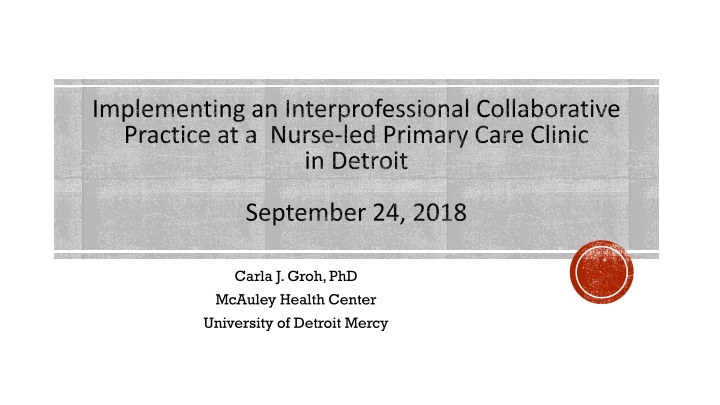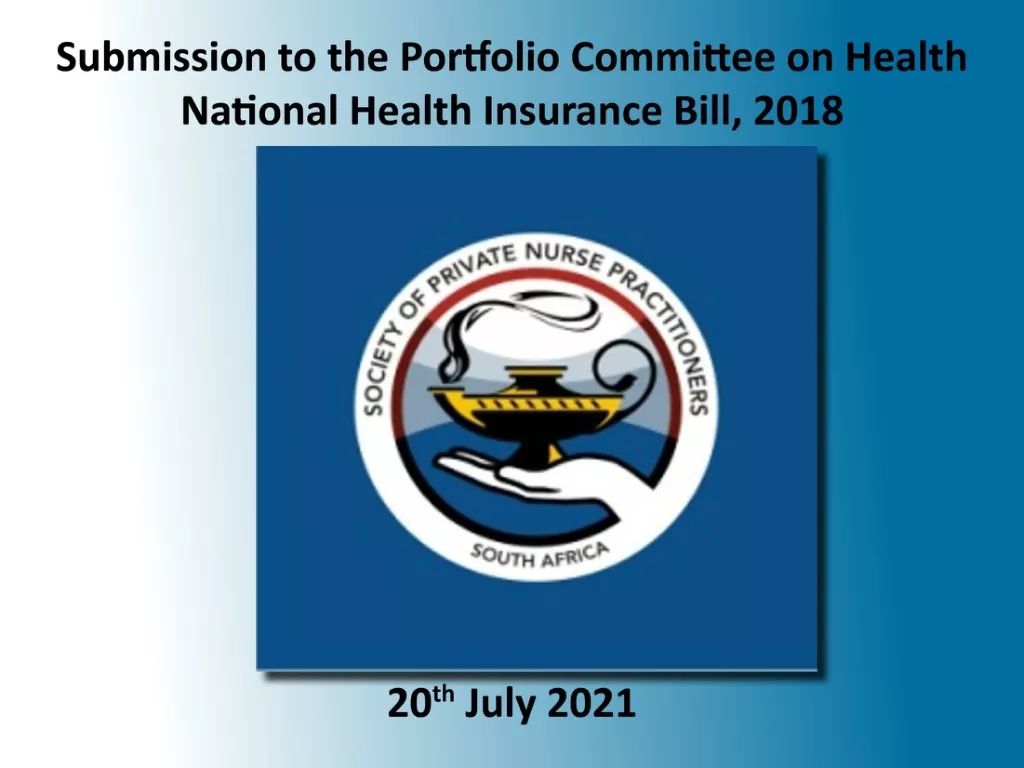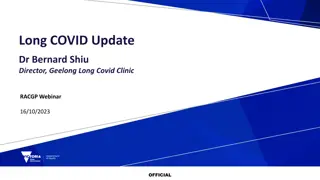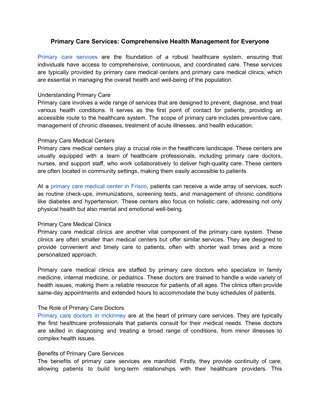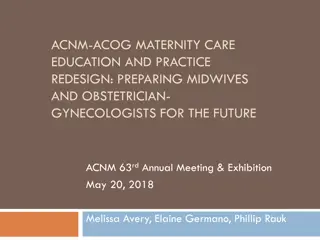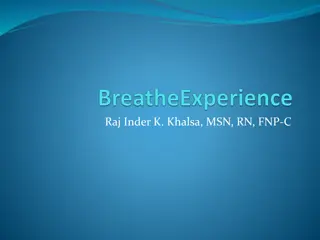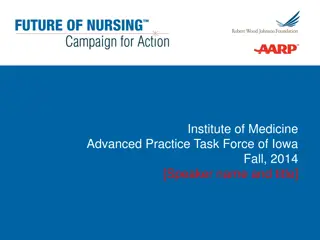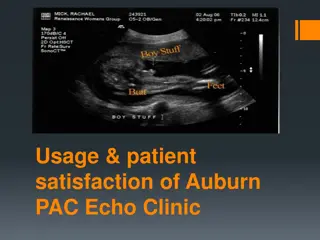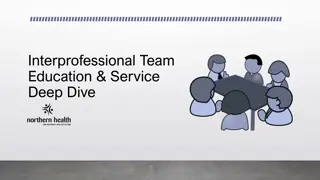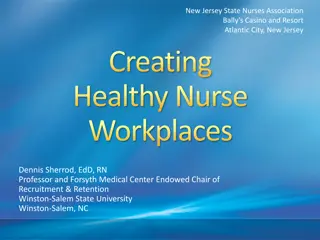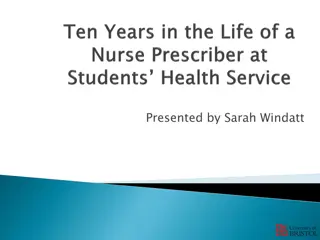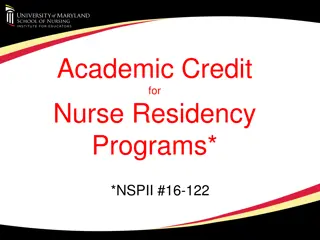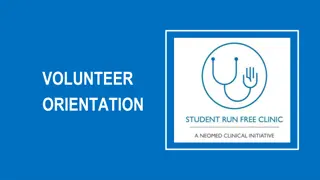Interprofessional Collaboration at Nurse-led Primary Care Clinic
The initiative led by Carla J. Groh, PhD, aims to enhance patient care through interprofessional collaboration at a nurse-led primary care center in Detroit. By integrating behavioral health services and improving care coordination, the program addresses the unique needs of low-income African American patients in the community.
Download Presentation

Please find below an Image/Link to download the presentation.
The content on the website is provided AS IS for your information and personal use only. It may not be sold, licensed, or shared on other websites without obtaining consent from the author.If you encounter any issues during the download, it is possible that the publisher has removed the file from their server.
You are allowed to download the files provided on this website for personal or commercial use, subject to the condition that they are used lawfully. All files are the property of their respective owners.
The content on the website is provided AS IS for your information and personal use only. It may not be sold, licensed, or shared on other websites without obtaining consent from the author.
E N D
Presentation Transcript
Implementing an Interprofessional Collaborative Practice at a Nurse-led Primary Care Clinic in Detroit September 24, 2018 Carla J. Groh, PhD McAuley Health Center University of Detroit Mercy
Nurse-led primary care center Located lower east side of Detroit Under the fiduciary channel of Detroit Mercy, McAuley School of Nursing McAuley Health Center Established in 2002 with funding from HRSA All ages of patients Primarily Medicaid and Medicare insurances 1
48213 Population: 27,7122 96.2% African American Median age: 38.1 years 48.3% live at or below poverty Median household income: $22,372 Zip Code 1
Low income African American Middle-age (40-50) Predominately female Multiple comorbidities Limited resources (e.g. transportation, housing, income, food) Patient Characteristics 1
Essential Hypertension Dysthymia Obesity Anxiety Common Diagnoses 1
Program started in 1996 Admit 30-40 students each fall 36 slated to graduate May 2019 MSN program until 2018 2018, switched from BSN to DNP with step-out 100% pass rate on certification exam 2016-2018 Family Nurse Practitioner Program: UDM 1
NEPQR Grant (UD7HP30928) 1 Purpose of the RFP: advance team-based care delivery by nurses and other health professionals that leads to high-quality, patient- and population- centered outcomes. The BHI focus aims to integrate evidence-based, interprofessional, team-based models of behavioral health services into routine nurse-led primary care, to include Nurse-Managed Health Centers. Funded July 1, 2017 through June 30, 2019 for $950,500. Funding received for: Staffing IT & EHR Staff Development
NEPQR Grant (UD7HP30928) 1 Six objectives of MHC proposal : 1. Expand behavioral health & substance abuse services to adults and children. 2. Enhance care coordination of behavioral health & substance abuse. 3. Improve overall health outcomes with co-occurring addictions. 4. Expand number of new health professionals trained in integrated care. 5. Implement an integrated EHR. 6. Partner with the community to increase knowledge and decrease stigma.
Staffing: 1.2 certified nurse practitioners 1 FTE director of clinic operations 1 FTE front desk receptionist 1 FTE medical assistant 1 FTE licensed professional counselor 1 FTE integration coordinator 0.5 FTE community health worker 0.3 FTE psychiatric nurse practitioner Diabetes educator Interprofessional Team 1
Consultants Charged to Grant: Interprofessional Team Evaluator Webmaster Biller-Coder Collaborating psychiatrist 1
What Makes MHC Interprofessional? Behavioral Health Care: Adjunctive Therapies: Primary Care: Family nurse practitioner Diabetes education Community health worker Licensed counselor for same day visits Psychiatric nurse practitioner for therapy and medication Psychiatrist Education classes Yoga (Y2) Tai Chai (Samaritan Center) 1
Purposed to train: Expand number of new health professionals trained in integrated care. 8 graduate nursing students 24 undergraduate nursing students 4 graduate addiction counseling students 1
8-9 FNP students every semester Focus of interprofessional model Y1: FNP Students & Interprofessional Learning MHC Work with care coordinator Option to shadow PNP SBIRT training Increased focus on relationship between mental and physical health during PCP visits Knowledge of community health worker and role in community to educate and decrease stigma 1
Outcomes for Year 1 Patient Outcomes Provider Outcomes Student Outcomes PROMIS CAHPS CPAT Demographics Clinical 1
Student Outcomes Y1: Demographics (July 1, 2017 June 30, 2018) 1 15 students had interprofessional experience at MHC. 12 were between 20 & 39; 3 were between 40 & 49. All female. Race: 9 white 4 African American 2 Asian
Faculty preceptor evaluation of student performance two questions relevant. Scale 1 (never) to 5 (consistently) Clinical Outcomes Question #1: Refers appropriately: Mean 4.26 Question #2: Develops good working relationship with staff: Mean 4.61 1
Student Evaluation of MHC 1 Would you recommend this site to other students? All stated Yes Comments: Great way to care for people with multiple medical and social issues. Great experience Great site for learning . . . Staff are nice.
Current preceptor and student evaluation forms do not address interprofessional learning experience: no data to evaluate effectiveness of interprofessional experience Lessons Learned FNP students are not required to spend time with PNP or care coordinator during their rotation at MHC: Not a robust experience in terms of interprofessional experience 1
Plans for Y2: Clinical Experience: Require that FNP students spend a minimum of 8 hours with PNP. Strategies to Enhance Interprofessional Experience for FNP Students FNP student to sit-in on session with care coordinator and patient he/she saw for primary care, with permission of patient. Negotiate clinical hours for FNP students to attend case conferences and staff development if occurs outside of usual clinical hours. Increase experience administering behavioral health and substance use assessment tools. Implement a community-based component for FNP students to attend a health fair, community education workshop, or other event coordinated by community health worker. Partner with addiction counseling student on projects related to the integration of behavioral and primary care. 1
Plans for Y2: Evaluation of Interprofessional Experience: Strategies to Enhance Interprofessional Experience for FNP Students Develop evaluation tools to measure interprofessional experience or revise current evaluation tools. 1
Sustainability of Interprofessional Model There is significant potential for sustainability. Integrated care is the trend in delivery of health care and education. Demonstrated to be cost-effective, increases access and acceptability for BH. 1 Will require changes in training of all health professionals. Will require changes in health insurance policies and credentialing. Issues with safety-net clinics in terms of funding and reimbursement.
